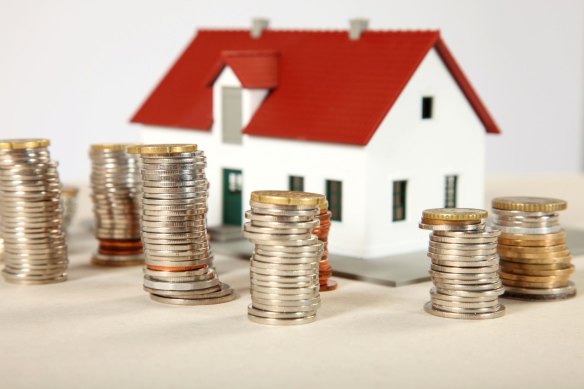Help! What loan should we get now our fixed rate is ending?
Save articles for later
Add articles to your saved list and come back to them any time.
Hi Nicole, my husband and I bought our home in Brisbane in October 2020 and took out a 30-year mortgage with Westpac for $549,500 on a fixed rate of 2.19 per cent for three years. We have approx. $506k left to pay, and shift onto a variable rate on October 6. We will be in a position to immediately pay down $100k when we go to variable, due to savings and inheritance. Westpac is offering a variable rate of 7.19 per cent (in a package that includes an offset account, credit card fee waiver, and discounts on insurance) and 8.48 per cent without a package. I’m curious to know how a redraw facility differs from an offset account. We are exploring a Commonwealth Bank “Unloan” option, which offers a rate of 5.59 per cent with a redraw facility, and unlimited free redraws. Thanks! Sarah, Brisbane.
Whichever way you cut this, your repayment leap is going to hurt Sarah – like hundreds of thousands of other Aussies, you are about to scale the “fixed rate cliff” that’s ominously spoken of.
But take a moment to feel smug that you have avoided almost 1.5 years of rate hikes and thus kept a bunch of money for yourself. Well played.
Offset accounts can be incredibly powerful debt reduction tools, but make sure you’re also getting a good deal on your repayments.
Your next mortgage move is, of course, crucial. And it may need to be to actually move mortgages, as you can do far better than an interest rate of even the cheapest Westpac is offering: 7.19 per cent.
When all these cheap-as-chips fixes were being offered in 2020, I wrote that often it was to lure customers to products with comparatively high revert variable rates.
But no matter – so long as you can pass the perfectly timed, newly relaxed refinancing stress tests, you can just shift to a far better one.
Now, comparison house Mozo says the average big four discounted variable rate – that’s the one you will typically get in a package or products like you have been offered – is currently on par at 7.29 per cent, with the average undiscounted at 8.26 per cent.
However, at the highly competitive end of the market, G&C Mutual Bank is giving refinancers a rate of 5.59 per cent. (For readers not refinancing, Police Credit Union is now at 5.64 while G&C Mutual Bank is extending 5.49 per cent to first-home buyers.)
That’s provided you have a loan-to-value ratio of 80 per cent or below, so at least 20 per cent equity in your home.
So, what of Unloan’s matching 5.59 per cent? It’s an interesting one. Unloan is the new online-only brand from Australia’s largest lender CBA, so its backing is sure solid.
In a clever move, it also rewards loyalty by making your interest rate cheaper as you go. As its website says: “Every Unloan gets an additional 0.01% p.a. discount — every single year.” So it peaks at 0.3 per cent off in year 30.
The catch – as you allude to Sarah – is it doesn’t offer offset accounts but only a redraw facility.
Mathematically, the interest savings are the same – any extra parked money is identically netted off your loan balance. But in an offset account, your money is officially quarantined from your loan – you retain full access with no notice.
Unloan says the same is true of its all-in-one-style loan redraw facility.
But what if you get into financial trouble and/or fall behind in repayments? What happens to your access to your extra cash in that case? Usually, you lose it.
The other issue I usually have with redraws should not be relevant with CBA’s robust backing: excess money sitting in redraw is not covered by the Australian government’s deposit guarantee of up to $250,000 should the lender go bust.
Lenders that are not authorised deposit-taking institutions (ADIs) can’t offer offset accounts as they are literally not authorised; CBA has simply chosen not to in this no-frills incarnation.
The loans I mention above – with comparable interest rates – are all from ADI’s and all carry genuine offset accounts. These are incredibly powerful debt reduction tools.
Indeed, if you can afford the higher repayments, consider reborrowing the same amount again and sitting your $100,000 in such an offset, for maximum safety and flexibility, should you need it down the track.
Nicole Pedersen-McKinnon is the author of How to Get Mortgage-Free Like Me. Follow Nicole on Facebook, Twitter or Instagram.
- Advice given in this article is general in nature and is not intended to influence readers’ decisions about investing or financial products. They should always seek their own professional advice that takes into account their own personal circumstances before making any financial decisions.
Expert tips on how to save, invest and make the most of your money delivered to your inbox every Sunday. Sign up here for our Real Money newsletter.
Most Viewed in Money
From our partners
Source: Read Full Article


